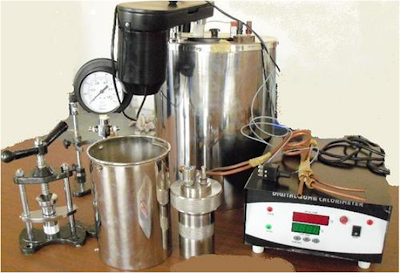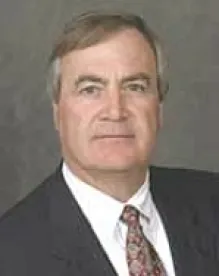As reported here, Special Master Sumner C. Rosenberg undertook construing certain claims of United States Patent Nos. 7,950,384 (the ‘384 patent) and 8,282,390 (the ‘390 patent) pursuant to an Order of April 25, 2013, entered by District Judge Amy Totenberg. Plaintiffs Coprecitec, S.L., Copreci, S. Coop., and Mandragon Components U.S.A. Co. (collectively “Copreci”) asserted 4 claims of the ‘384 patent and 12 claims of the ‘390 patent against The Brinkmann Corporation (“Brinkmann”). The Special Master solicited and reviewed briefs and held a hearing on July 17, 2013.
The Copreci patents cover gas control valve rotational travel on gas grills which convert between liquefied petroleum gas and natural gas. The patents share “essentially the same specification,” which addresses the need for different minimum settings for gas flow to allow a greater opening to deliver the lower pressure “lower calorific” natural gas than for liquefied petroleum gas, which requires greater limitation of flow. Combustion heat is conventionally measured with a bomb calorimeter (example pictured below). Thus, natural gas produces less heat than liquefied petroleum gas.

The claim construction dispute fell into two categories: (1) Whether certain terms (“first part,” “second part,” and “rotatable structure”) were “means plus function” elements under 35 U.S.C. § 112, paragraph 6 (§ 112, ¶6); and (2) How the following term should be construed: “absent the presence of the first part or the second part the regulating organ is rotatable to the second angular position.”
The Special Master set forth the claim construction principles as recited in Phillips v. AWH Corp., 415 F.3d 1303 (Fed. Cir. 2005)(en banc), stressing the importance of the ordinary and customary meaning to a person of ordinary skill in the art in question at the time of the invention. It is presumed the claim term is read in the context of the entire patent and the court looks to sources available to the public including the prosecution history, extrinsic evidence of relevant scientific principles, of technical term definitions, and of the state of the art. The Special Master noted the usually dispositive role of the specification cited by Phillips.[1]
Claim 1 was quoted in relevant part:
the valve having a first part that rotates simultaneously with a rotation of the control knob and that is co-operable with a second part, apart from the valve, situated on the appliance to prevent rotation of the regulating organ beyond the first angular position, absent the presence of the first part or the second part the regulating organ is rotatable to the second angular position.
‘384 patent, 6:32-38.
The Special Master noted that since the word “means” was not used in the claim language, there is a rebuttal presumption that the terms are not a “means plus function.” No expert testimony was offered by either side, and the Report found that Brinkmann did not meet its burden. Although the terms “first part” and “second part” did not independently connote their use in the claims in which they were used, Lighting World, Inc. v. Birchwood Lighting, Inc., 382 F.3d 1354, 1359 (Fed. Cir. 2004), held
[I]t is sufficient if the claim term is used in common parlance or by persons of skill in the pertinent art to designate structure, even if the term covers a broad class of structures and even if the term identifies the structures by their function.
Although “part” in itself is “a generic word” it is to be considered “in the context in which it appears in the claim.” The Special Master dismissed Brinkmann’s argument that the contextual language described the “function” or “purpose” in favor of a conclusion that the contextual language expressed the “objective” of the two parts interacting together. Importantly, the Special Master pointed out neither part could alone provide the “prevent rotation” functionality argued by Brinkmann.
The Special Master noted an example of means plus function language provided by Copreci as illustrating that the patent was less broad and constituted a general way in which the inventive concept was physically implemented rather than the function performed. The persuasive means plus function language suggested by Copreci was:
means for selecting whether the valve provides flow at the minimum rate of nature gas or the minimum rate of liquefied petroleum gas.
Special Master Rosenberg noted that the means plus function language would support a broader range of potential solutions, including, e.g., “a programmable servo that limits the travel of the valve based on the type of fuel being used.” He found “that the claim language is sufficiently plain and common that one of ordinary skill in the art would understand . . . sufficient structure for the ‘first part’ and ‘second part.’”
The Special Master’s construction of “rotatable structure” as emphasized in the claim language quoted below was similar to the analysis used in construing parts.
a rotatable structure configured to rotate with the shaft, wherein the rotatable structureand the stop are configured to cooperate to prevent rotation of he regulator beyond the first angular position and to prevent rotation of the regulator to the second angular position.
Claim 7:1-5 of the ‘390 patent.
He found the rotatable structure was “configured to rotate” or “configured to cooperate” and thus set “forth the physical operation of the device in terms of the relationship and operation of the parts” rather than constituting a function.
Brinkmann argued that the ambiguity in the phrase: “Absent the presence of the first part or the second part the regulating organ is rotatable to the second angular position” should be construed broadly – such that the first part, the second part, or both could be absent. Although the embodiments shown in the patent showed first one part then the other being removable, neither showed both parts being removable. The Special Master found Copreci’s argument that a claim should not be construed to exclude a preferred embodiment persuasive. The special master construed the claim as follows to remove any ambiguity: “wherein the regulating organ may rotate to the second angular position if either the first part or the second part is not present.”
The report does not appear to bode well for Brinkmann’s non-infringement positions.
The case is Coprecitec, S.L., et al. v. The Brinkmann Corp., No. 1:12-cv-01480-AT, Special Master’s Report on Claim Construction filed 8/20/13 in the U.S. District Court for the Northern District of Georgia, Gainesville Division, assigned to U.S. District Judge Amy Totenberg – Special Master Sumner C. Rosenberg.
[1] Vitronics Corp. v. Conceptronic, Inc., 90 F.3d 1576, 1582 (Fed. Cir. 1996).



 />i
/>i

